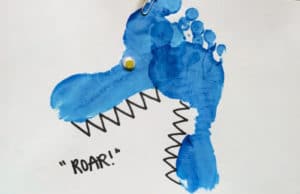It’s been very interesting to see how visitors interact with the site, what sections are of priority, and how people are navigating through the extensive information we have provided. We’re paying close attention to what you want to know, and how we can meet those needs at ScuttleBugs! In light of this, we hope you find this blog post on the topic of biting informative and helpful.
A child biting is never pleasant for anyone involved, even more so when it is your first experience! Or it is your own child. Whilst shocking at times, aggressive behavior of any sort is a distinctive element of infant, toddler and preschooler development . Still-emerging language skills, a fierce desire to be independent and under-developed impulse control deem children in their first 5 years as prime candidates for getting physical.
What might kids do? What sets it off?
“Some degree of hitting and biting is completely normal for a toddler,” says Nadine Block, co-founder of the Center for Effective Discipline (CED) in Columbus, Ohio.
Physically harming actions such as biting, hitting, pushing, kicking, pinching, scratching, and hair pulling are typical behaviors for young children. Of course, that doesn’t mean you should ignore it! These are widely considered the growing pains of early development, and at ScuttleBugs CDC we turn them into learning opportunities or “teachable moments” for using our words, taking turns, empathy, and understanding peer relationships.
Young children lash out for many reasons including:
| Frustration | Coping Ability | Lack of Motor Control | Anger | Teething |
| Anxiety/Stress | Needing Attention | Lack of Verbal/Social Skills | Tiredness/Fatigue | Impulsivity |
| Defending property or space | Exploration | Cause and Effect | Overcrowding | |
| Boredom | Peer Interaction | Hunger | Over stimulation |
With so many contributing factors (stand alone or collectively), it should come as no surprise that some behaviors, such as biting, tantrums, refusal to participate etc., periodically occur. Particularly in a group setting of young children.

Stress and some common causes
These behaviors, if they occur, usually correspond with times of stress. Common stressful events may include:
| Life Changes | Disruption of Normal Routine | Illness |
| Lack of Sleep | Times of Parental Absence | Relocation |
| Travel | Over Stimulation | New Sibling |
| New School | Separation/Divorce | Home Environment Stress |
Parents and teachers together
Every child is unique. It’s also natural that the cause of certain behaviors or how they affect each child may also differ. As teachers, regardless of how many different children and behaviors we’ve worked with, we always take each case individually and seriously. We draw from our experience and adopt different strategies for each child/family, although admittedly, sometimes, there can be an initial period of trial and error to identify what works and what doesn’t.
To minimize the possibility of other children picking up the negative behaviors they observe, we sometimes act out the incident in the form of a puppet show or story during Circle Time and practice gentle behaviors together through games.
We use our observations, what we know about the child, and what family members share with us to assess the distinction between harmful/hurtful behavioral incidents and age-appropriate behaviors that require guidance and redirection.
We work closely with the family/child to successfully rectify the issue in a timely manner. Yes, sadly, over the years we’ve had one or two families whose children were bitten withdraw from our center. Thankfully, however, we have assisted and supported even more to successfully overcome the unfavorable behavior and continue on a more positive learning journey.
It is our policy to fill out an incident/accident form for observed occurrences or noticed marks after the fact. At times, we also inform parents with a phone call.
Our video surveillance system allows us to review the footage of any event the teachers are aware of (real time or after), and proves very helpful in learning exactly what happened (leading up to, teacher/child proximity etc.) and determine more relevant, specific information.
When we notice a pattern of behavior occurring, we monitor, document, and keep parents appraised over a 2-6 week period. During this period if consistent incidents continue, we meet the family to collaborate on and implement a behavior plan. The behavioral plan includes changes the parents can make at home and changes we can make at school to better redirect the child towards engaging in more gentle/appropriate behaviors. We document the date, time, and details of any attempts/incidents in the child’s personal behavioral log, in order to monitor patterns and their progress.
For obvious privacy reasons and in accordance with CCLD Parent/Personal Rights regulations, we cannot disclose the identity of the child/family involved, or the details of subsequent parent conferences and behavior plans. However, we are always open to talking with parents about their concerns and hearing suggestions they may have.
Individual development plans and strategies should not be viewed as a punishment for the child. If they are having a difficult or emotional day resulting in negative behaviors, it may be best for them to go home or move to a different group for the day.
Some general information and strategies
Of course this behavior also can happen in the home and so we offer some further thoughts to try and help, particularly new, parents.
In addition to the extensive information readily available on this topic (books, articles, research papers etc.), here are a few strategies that may prove effective in addressing the behavior:
- Logical consequences
- Set clear limits/rules
- Teach alternatives
- Reward good behavior
- Consistent drop-off/pick up (same parent and time if possible)
- Quiet time/Thinking chair
- Less time/attention spent on offending child
- Support staff to shadow as needed
- More engaging activities and structure
- Identify triggers (ie: Is the child hungry?, Are there sufficient quantity of toys/equipment to prevent snatching/fighting with “mine” outcome?, Does the child target certain children over others?, etc.).
We strongly recommend you include your child as you learn about certain behaviors. We consider any kids books on the topic to be a staple for any child’s library. We recommend the following from the Best Behavior Series:
“Feet Are Not for Kicking” by Elizabeth Verdick and Marieka Heinlen
“Hands Are Not for Hitting” by Martine Agassi Ph.D. and Marieka Heinlen
“Teeth Are Not for Biting” by Elizabeth Verdick and Marieka Heinlen
“Voices Are Not for Yelling” by Elizabeth Verdick and Marieka Heinlen
You can use the books to build a conversation with your child about “Keeping our hands to ourselves.”, “Looking with our eyes, and not with our hands.”, “We bite food not friends/family”, “Inside voices”, and “Gentle hands/feet”. Each reading should ideally be followed by an activity/interaction reinforcing the lesson/moral and allowing them to practice what they see in the books. For example, if you read “Hands are not for hitting” then practice by having the child stroke your hand gently, or do some hand-print art that requires slow, even movement.
In conclusion
It is simply a fact of life that these behaviors happen. Many centers adopt a “zero tolerance policy” for biting or “aggressive” behaviors. We don’t believe this is fair at all. We address immediately any case that arises and work accordingly with the child and parents to resolve it quickly and smoothly. It can be more difficult for a parent, confronted with this problem for the first time, to work through it swiftly and gently. We are as committed as you are to your kids. We believe a joint effort between parents and teachers will produce a far batter and quicker result for the children.
All our parents know that the safety of their children in our care is our top priority. For a complete copy of the ScuttleBugs Discipline and Behavior Policy, or if you have additional questions we are here to assist. Feel free to contact us any time.
We also love receiving your feedback if you have found a particular blog helpful, or want to suggest other focus topics.

